Designs & Patterns of Fabric
Designs & Patterns of Fabric
Patterns that reflect a sense of the season such as wind chimes, paper fans, morning glory flowers, and fireworks have often been used for women's Yukatas.
However, recent patterns of rich variety do not necessary stay within the confines. Men's Yukatas are mostly of abstract patterns like stripes and plaids.
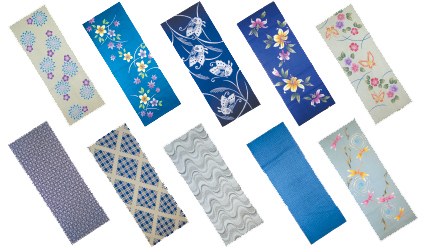
Dyeing of the Yukata
As stated in the "History of Yukata," Kata-zome (stencil dye) and Shibori-zome (tie-dye) have been the traditional methods for dyeing the Yukata.
When using the Kata-zome method, templates are placed on plain white fabric and glue is pasted where resist dyeing is desired, sun-dried and then dyed.
When using the Shibori-zome method, dyeing is resisted in desired places by tying the cloth tightly.
The coloring used is called the "Ai".
The "Ai-zome" can bring out beautiful Ai- iro colors as shown in the photos above.
While traditional methods are still practiced in the dyeing of modern Yukatas, the main stream is the "Chu-sen" method in which fabrics are dyed in folds, and the "Print Oshi-zome" method.
染めの種類は、例えば以下のものあります。
Types of Fabric
Many of Yukata are made of OKA-MOMEN and Yukata is worn next to the skin in general. Other than this, MEN-RO, TUMUGI and ASA-CHIJIMI are materials that you can dress in layers of long undergarment.
OKA-MOMEN flat-woven cotton fabric
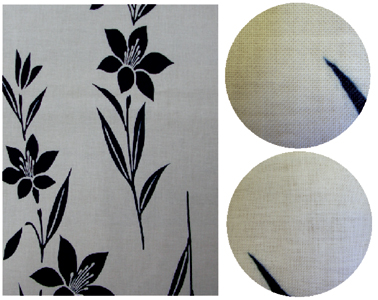
綿の平織
MEN-RO translucent fabric
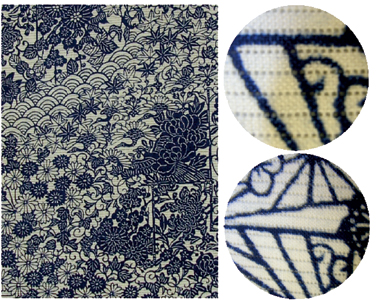
絽面と呼ばれる隙間が特徴で、透け感がある
MEN-TUMUGI slightly thick fabric
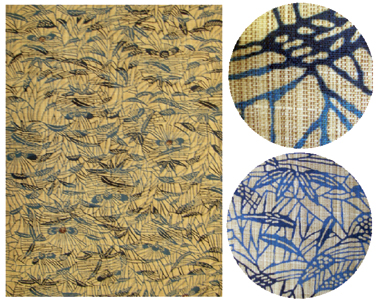
素朴な風合いで、やや厚地で、透け感がない
MEN-KOUBAI thin plaid fabric
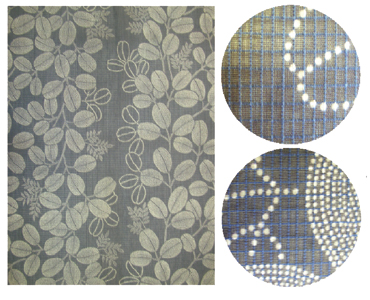
格子状に太目の糸を織り込み、薄くて透け感のある生地
ASA-CHIJIMI fabric with crisp and cool touch of hemp
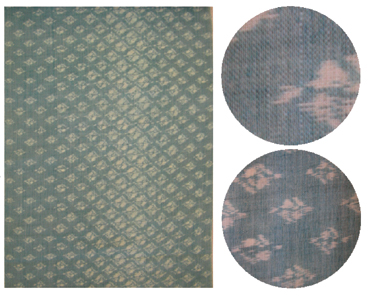
麻のひんやりした感触が特徴
SHIBORI-ZOME tie-dye cotton fabric
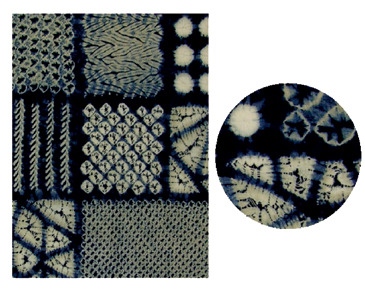
木綿に絞りを施し、染めることで、柄を表したもの、有松鳴海絞りが有名
